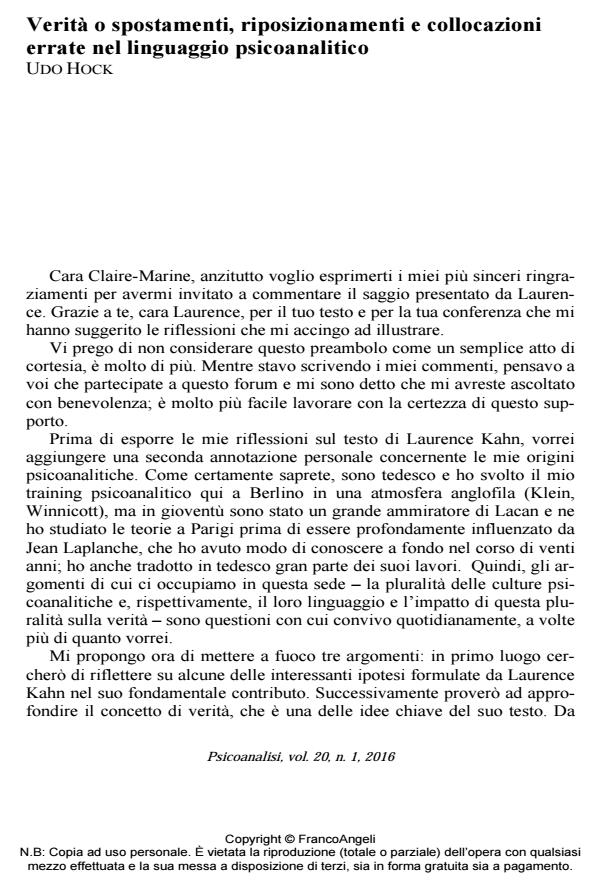Verità o spostamenti, riposizionamenti e collocazioni errate nel linguaggio psicoanalitico
Journal title PSICOANALISI
Author/s Udo Hock
Publishing Year 2016 Issue 2016/1
Language Italian Pages 10 P. 21-30 File size 155 KB
DOI 10.3280/PSI2016-001003
DOI is like a bar code for intellectual property: to have more infomation
click here
Below, you can see the article first page
If you want to buy this article in PDF format, you can do it, following the instructions to buy download credits

FrancoAngeli is member of Publishers International Linking Association, Inc (PILA), a not-for-profit association which run the CrossRef service enabling links to and from online scholarly content.
The essay is the essence of Udo Hock remarks followed those of Laurence Kahn on the ethical issue, and try to establish the necessary conditions for an ethics debate in psychoanalysis. There are three steps in which it develops the discussion: first reflected on some of the interesting assumptions made by Laurence Kahn in his contribution. Subsequently, the author tries to explore the concept of truth, which is one of the key ideas of Kahn’s text. Finally, he proceeds a further step in the direction she indicated, comparing two concepts: psychic reality, inner/reality world, as an example of an important change in the psychoanalytic lexicon.
Keywords: Truth, change, lexicon, psychic reality and the inner world
Udo Hock, Verità o spostamenti, riposizionamenti e collocazioni errate nel linguaggio psicoanalitico in "PSICOANALISI" 1/2016, pp 21-30, DOI: 10.3280/PSI2016-001003